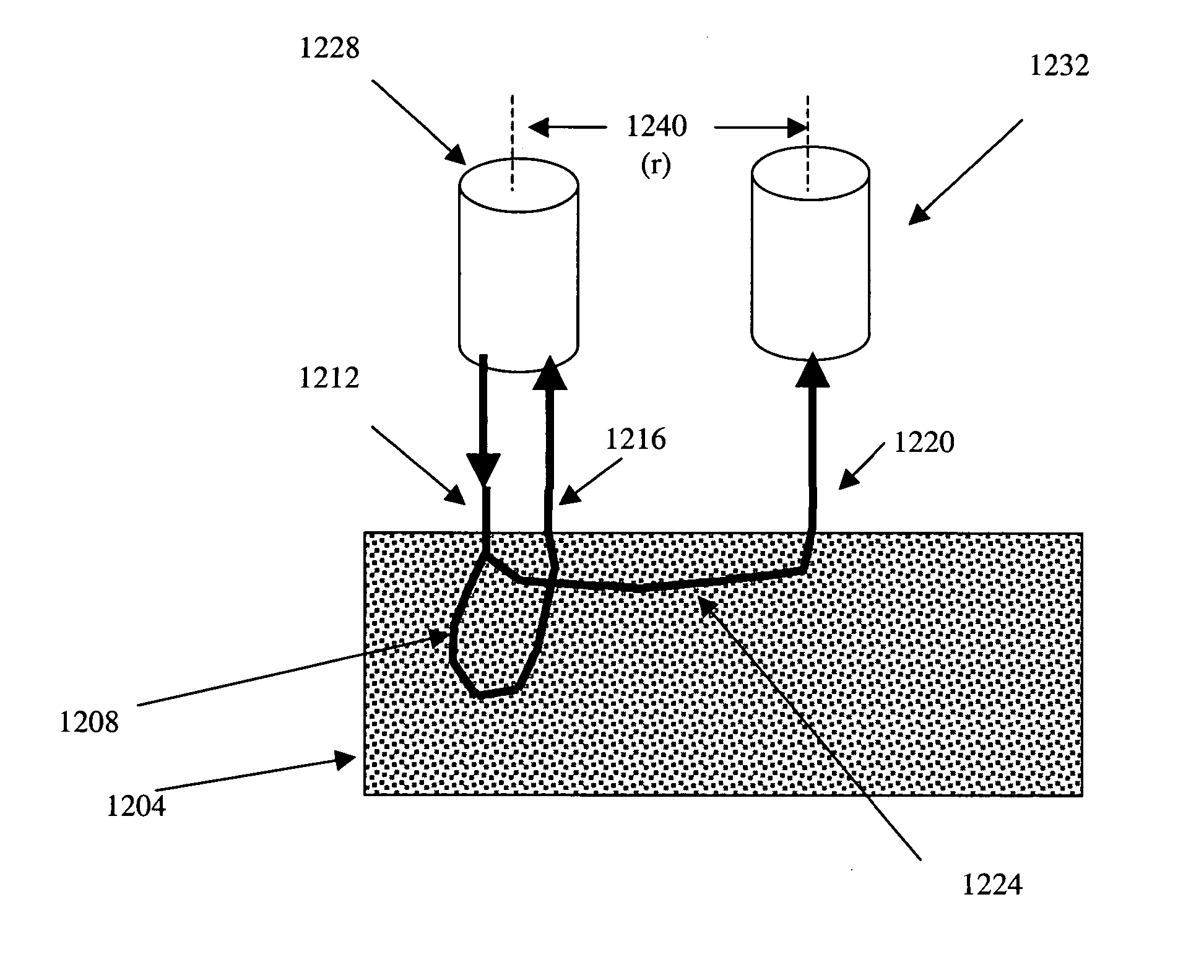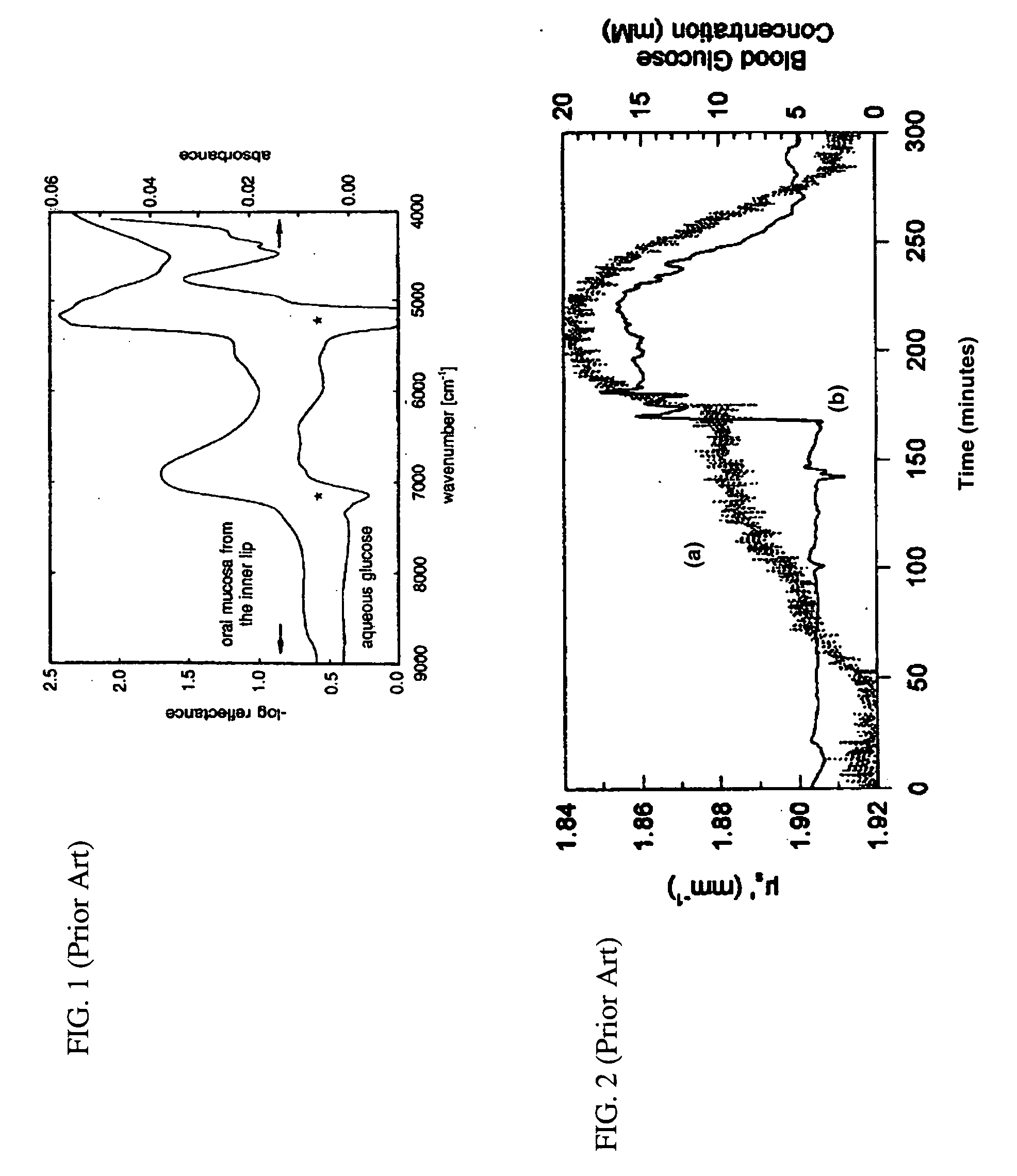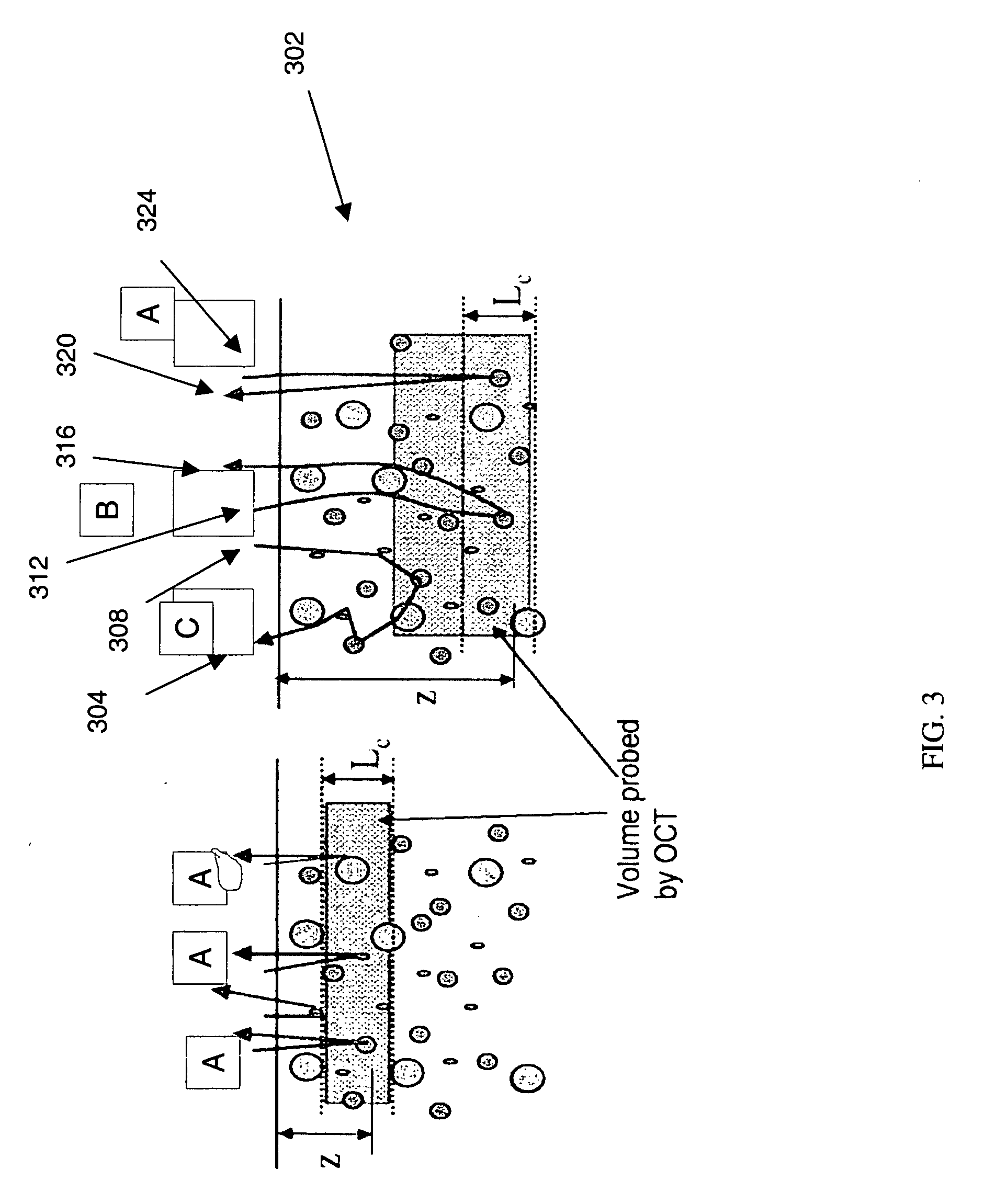Interferometric sensor for characterizing materials
a technology of interferometer and material, applied in the field of interferometer sensor for characterizing materials, can solve the problems of loss of information about the material including the concentration of an analyte in the material, pain and discomfort, and leakage of albumin amounts, etc., and achieves the effect of fast and robust design, acceptable signal-to-noise ratio (snr), and fast and steady operation
- Summary
- Abstract
- Description
- Claims
- Application Information
AI Technical Summary
Benefits of technology
Problems solved by technology
Method used
Image
Examples
example 1
[0115] The data shown in FIG. 9 was obtained using a low-coherence interferometer operating at a wavelength of 1300 nm and with a dynamic range of 90 dB. The signal was collected using single mode fibers in close proximity of the medium's interface. The scattering medium consisted of a suspension of polystyrene microspheres in water with a volume fraction of 2% and an average diameter of 0.76 microns. The distance (r) between the single mode fibers, points A and B on the sample, was varied between 60 microns and 2 mm.
PUM
| Property | Measurement | Unit |
|---|---|---|
| diameters | aaaaa | aaaaa |
| separation distance | aaaaa | aaaaa |
| wavelengths | aaaaa | aaaaa |
Abstract
Description
Claims
Application Information
 Login to View More
Login to View More - R&D
- Intellectual Property
- Life Sciences
- Materials
- Tech Scout
- Unparalleled Data Quality
- Higher Quality Content
- 60% Fewer Hallucinations
Browse by: Latest US Patents, China's latest patents, Technical Efficacy Thesaurus, Application Domain, Technology Topic, Popular Technical Reports.
© 2025 PatSnap. All rights reserved.Legal|Privacy policy|Modern Slavery Act Transparency Statement|Sitemap|About US| Contact US: help@patsnap.com



